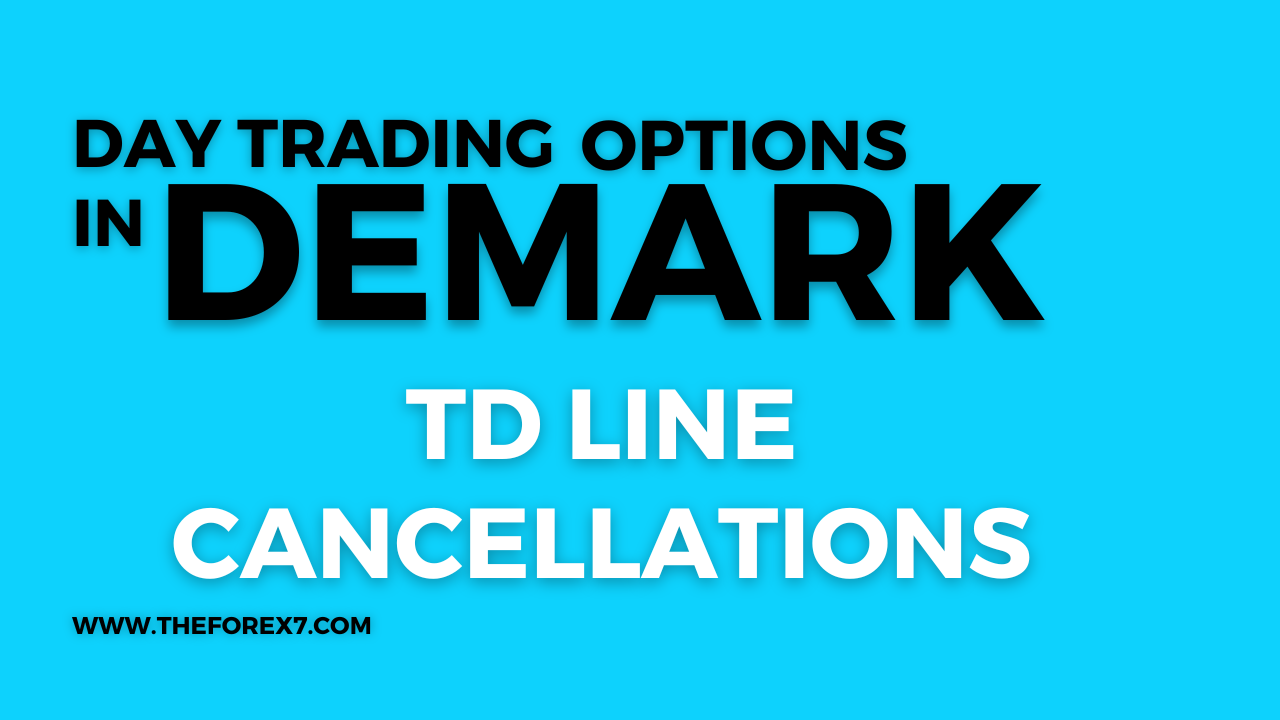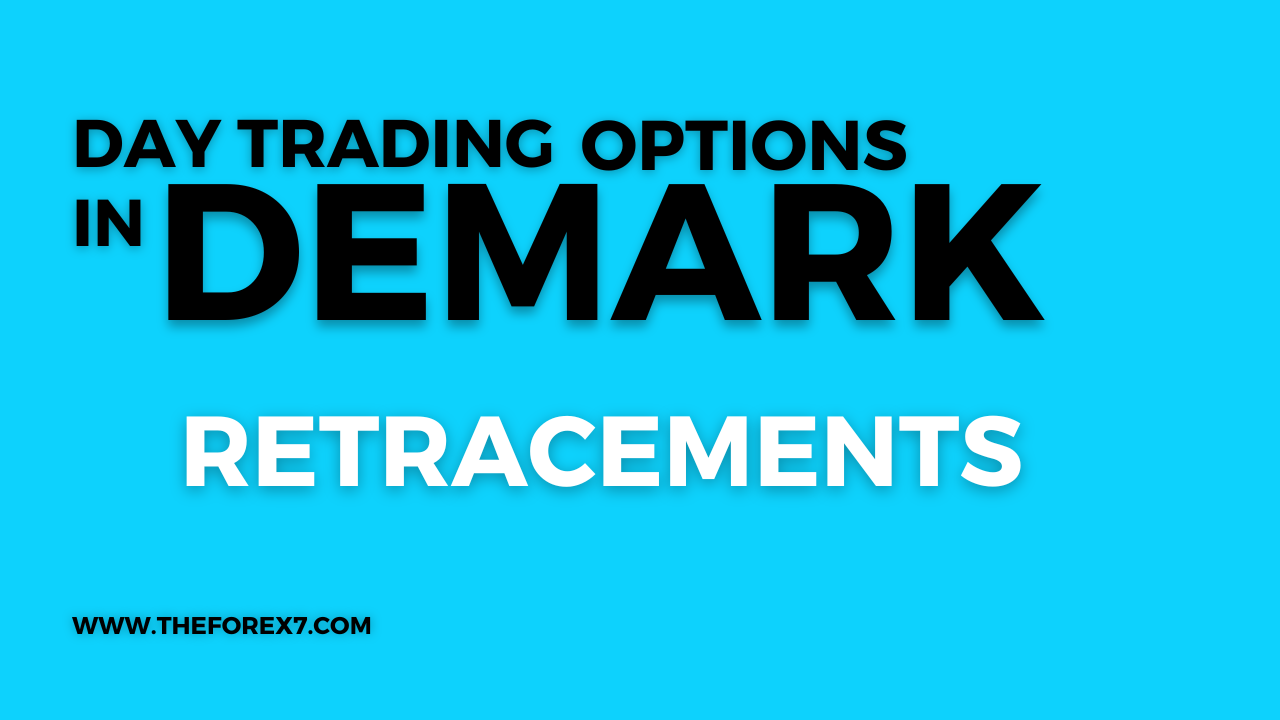TD Line Cancellations
Line Gap trades, Momentum indicators, Entry point, Day trading, Price bar
Course: [ Demark on Day Trading Options : Chapter 7: Disqualified Breakouts ]

The price bar immediately following an upside qualified breakout opens below the breakout price level, then exit the trade once the market opens.
TD LINE CANCELLATIONS
If one is day trading, then these
cancellations can be ignored. However, if a trader is a trend follower, then
any one or all of these cancellations or exits can be introduced. Three
cancellations to an upside breakout above a TD Supply Line exist. If any of
these cancellations occur, then the breakout above the TD Line is invalidated.
- If the price bar immediately following an upside qualified breakout opens below the breakout price level, then exit the trade once the market opens.
- If the price bar immediately following the breakout bar opens below the close of the breakout price bar and then closes below the breakout price level, then exit the trade.
- If the price bar immediately following the breakout bar fails to exceed the high of the breakout price bar upside, then exit the trade.
Conversely, three cancellations to a
downside breakout below a TD Demand Line exist. If any of these cancellations
occur, then the breakout below the TD Line is invalidated.
- If the price bar immediately following a downside qualified breakout opens above the breakout price level, then exit the trade once the market opens.
- If the price bar immediately following the breakout bar opens above the close of the breakout price bar and then closes above the breakout price level, then exit the trade.
- If the price bar immediately following the breakout bar fails to exceed the low of the breakout price bar downside, then exit the trade.
TD Line Summary
As you can see, TD Lines are
constructed objectively and are a great aid to trend followers who wish to be
alerted to potential low-risk intrabar price-breakout trading opportunities. By
introducing the trading qualifiers we mentioned earlier, a trader can
distinguish between valid and invalid trendline breakouts. Although not
perfect, this filtering process enables a trader to enter an intraday breakout
instead of awaiting the closing price to confirm the trade. A preferred use of
the TD Line breakout qualifiers for option trading is to trade against the
market’s trend and only concentrate upon those breakouts which are
disqualified. Once these trading opportunities are identified, a trader can
select specific options related to the underlying security and further confirm
the signals with the option-related rules and other indicators described
throughout this book.
TD LINE GAP
TD Line Gap is a derivative of TD Lines
which introduces a novel way of drawing trendlines. Just as it does with TD
Lines, price activity has a way of respecting these trendlines. Their
construction is simple and the interpretation is straightforward. In fact, the
numerous qualifiers and conditions associated with TD Lines can be applied or
ignored totally with TD Line Gap. This indicator has a special application to
option trading, allowing a trader to enter the market just after the open and
to remain in the trade throughout the trading day. It’s a form of trend
following, but the entry is sufficiently early to allow participation
throughout the trading day.
TD Line Gap is an indicator which
constructs a TD Line from a TD Point and a subsequent price gap or price lap. A
price gap is described as a low which is above the previous price bar’s high,
or a high which is below the previous price bar’s low. A price lap, on the
other hand, is described as a low which is above the previous price bar’s close
but not greater than the previous price bar’s high, or a high which is below
the previous price bar’s close but not less than the previous price bar’s low.
The construction of TD Line Gap first requires the identification of the most
recent TD Point Low or TD Point High and the low or the high of the most recent
price gap or price lap following the TD Point Low or TD Point High. In other
words, to draw an upward-sloping TD Line Gap line, one must connect the most
recent TD Point Low to the low of the most recent price gap upside or price lap
upside. Conversely, to draw a downward-sloping TD Line Gap line, one must connect
the most recent TD Point High to the high of the most recent price gap downside
or price lap downside. For purposes of this discussion of TD Line Gaps, we
treat price gaps and price laps similarly; however, they can be separated into
two groups if a trader prefers, TD Lines with gaps and TD Lines with laps.
As with trendlines and TD Lines, once a
breakout of a TD Line Gap line occurs, a low-risk buying (call-buying) or
selling (put-buying) opportunity is presented. In the case of an upside
breakout of a downward-sloping TD Line Gap line, the current price bar’s open
must be greater than the previous price bar’s close to justify entry.
Alternatively, if the current price bar opens above the descending TD Line Gap
line and then trades at least one additional tick higher, a low-risk entry
point is defined. In either of these cases, an upside TD Line Gap breakout
presents a low-risk buying (call-buying) opportunity. Conversely, in the case
of a downside breakout of an upward-sloping TD Line Gap line, the current price
bar’s open must be less than the previous price bar’s close to justify entry.
Alternatively, if the current price bar opens below the ascending TD Line Gap
line and then trades at least one additional tick lower, a low-risk entry point
is defined. In either of these cases, a downside TD Line Gap breakout presents
a low-risk selling (put-buying) opportunity.
Figures 7.11 and 7.12 demonstrate the ease of TD Line Gap
construction, as well as its interpretation. Figure
7.11 illustrates three TD Line Gap
trades for the S&P March 1999 future. In each instance, entry at the
opening upon exceeding the TD Line Gap produced large intraday profits. Each of
these three trades worked on a closing basis, and even followed through the next
trading day. By evaluating his or her position prior to the close, a day trader
may have chosen to remain in the trade, thereby realizing a greater profit.
Also, had a trader elected to day trade options rather than the future, larger
intraday returns should have been realized due to the fact that options are
highly leveraged. Figure 7.12 of Intel (INTC) displays three TD Line Gaps—two
up-sloping (demand lines) and one down-sloping (supply line). In each instance,
the opening price of the breakout price bar exceeded the TD Line Gap line in
the direction of the breakout and then traded at least one tick further in the
direction of the breakout, indicating a legitimate TD Line breakout. Each TD
Line Gap low-risk entry level provided ideal option purchasing entry points and
sizable profits, particularly the first and third occurrence. Had the more
restrictive confirmation indicator TD Line Gap REBO (see following section)
been installed, the entry levels would not have been as favorable, as a trader
would need to await a breakout above or below both the TD Line Gap level and
the TD REBO level. In these cases, if one were to use TD Line Gap REBO, an
option trader would be forced to await a subsequent TD REBO indication rather
than enter immediately following the opening price, since each TD Line Gap
breakout occurred on the open.
TD LINE GAP REBO
Due to the high levels of market
volatility over the recent years and the market’s tendency of forming a series
of consecutive price gaps, creating numerous TD Line Gaps, we have added an
additional element to perfect low-risk entries for TD Line Gaps. We refer to
these enhanced TD Line Gap indications as TD Line Gap REBO, since we combine
the critical TD REBO component to the TD Line Gap indicator. TD REBO is an indicator
that identifies upside and downside levels at which market price momentum
occurs. TD REBO is calculated by taking a percentage of the previous price
bar’s true price range and adding that value to (for an upside move) or
subtracted that value from (for a downside move) the current price bar’s
opening price. When price breaks out above the upper TD REBO level, it
indicates that further price movement to the upside should continue; when price
breaks down below the lower TD REBO level, it indicates that further movement
to the downside should continue. For TD Line Gap REBO, we typically use a
modest percentage

Figure 7.11.
The S&P March 1999 futures contract displays three instances where TD Line
Gap occurred. In each instance, price broke out at the opening and produce a
profitable return for an option day trader.

Figure 7.12.
This chart illustrates three daily TD Line Gap trades for Intel. In each case,
price exceeded the TD Lines Gap line on or just after the open and was
immediately followed by favorable price moves.
factor for TD Line Gap REBO of 38.2
percent of the previous price bar’s true range. Chapter 9 discusses TD REBO and
TD REBO Reverse in greater detail.
TD Line Gap REBO combines these two
momentum indicators to confirm a TD Line Gap breakout. While this method is
trend-following in nature and therefore occasionally results in delayed market
entries, it serves to confirm the breakout. In order to obtain a low-risk entry
point for TD Line Gap REBO, the market must exceed not only the TD Line Gap
level, but also the TD REBO level in the same direction. Therefore, in the case
of a TD Line Gap REBO upside breakout, the current bar’s opening price must be
greater than the previous price bar’s close, and then price must exceed to the
upside both the downward-sloping TD Line Gap line and the higher TD REBO level.
In other words, for an upside TD Line Gap breakout indication to be given, we
require that not only the open be greater than the prior price bar’s close, but
that price advances above the TD Line Gap line and the TD REBO upside level as
well. When price exceeds not only the TD Line Gap line to the upside but also
the TD REBO level upside as well, it indicates that price momentum is positive
and presents a low-risk buying (call-buying) opportunity. Conversely, in the
case of a TD Line Gap REBO downside breakout, the current bar’s opening price
must be less than the previous price bar’s close, and then price must exceed to
the downside both the upward-sloping TD Line Gap line and the lower TD REBO
level. In other words, for a downside TD Line Gap breakout indication to be
given, we require that not only the open be less than the prior price bar’s
close, but that price declines below the TD Line Gap line and the TD REBO
downside level as well. When price exceeds not only the TD Line Gap line to the
downside but also the TD REBO level downside as well, it indicates that price
momentum is negative and presents a low-risk selling (put-buying) opportunity.
The following charts demonstrate both
TD Line Gap and TD Line Gap REBO. Figure 7.13 shows the TD Line Gap trades for EBAY. Note that
significant intraday profits were achieved and the performance would have been
further enhanced in each instance by day trading options. By adding the REBO
filter, entries would once again not have been as ideal, but would have
produced profits as well. Figure 7.14 of Treasury Bonds March 1999 includes three TD Line
Gaps. In each instance, the breakout openings which exceeded the TD Line Gap
lines were precursors to profitable intraday trades. By adding REBO
requirements to the entry, the trades become less profitable, but safer, since
REBO serves as an additional confirmation qualifier which ensures a legitimate
breakout.
Demark on Day Trading Options : Chapter 7: Disqualified Breakouts : Tag: Option Trading : Line Gap trades, Momentum indicators, Entry point, Day trading, Price bar - TD Line Cancellations



